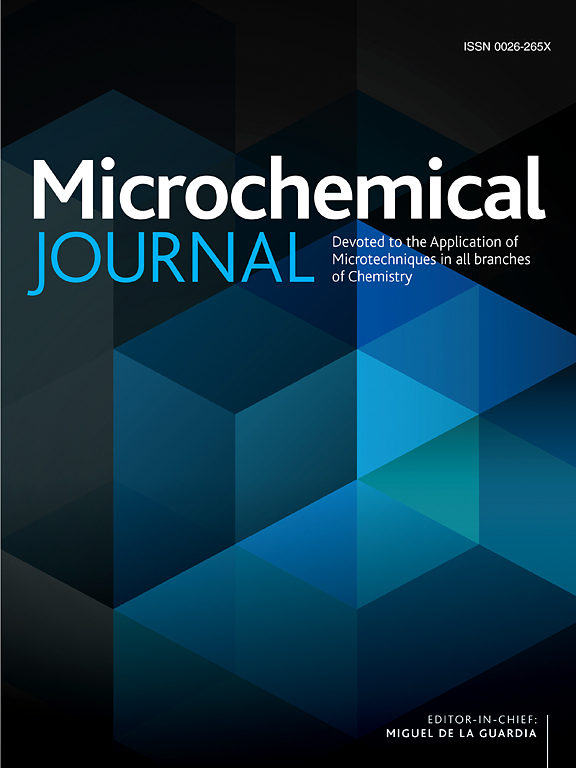毛细管电动色谱法中疏水化合物的在线预浓缩技术:综述
IF 4.9
2区 化学
Q1 CHEMISTRY, ANALYTICAL
引用次数: 0
摘要
毛细管电泳(CE)是一种与广泛使用的液相色谱法竞争的分析技术。它的特点是试剂和有机溶剂消耗量低,分析时间相对较短,因此操作成本低且环保。遗憾的是,与液相色谱法相比,使用分光光度法检测时的浓度检测限(LOD)要高得多。不过,在线预浓缩技术的发展克服了亲水性化合物的这一问题。然而,对于疏水性化合物,尽管分离模式和新型伪静止相不断发展,但仍然需要新的信号增强方法。生物和环境样本中存在的超痕量有毒或药理活性物质通常包括疏水性化合物,其浓度可达纳摩尔甚至皮摩尔。因此,有必要寻求新的解决方案来降低检测限,这将拓展疏水化合物分析电迁移技术领域的知识。本综述总结了目前利用在线预浓缩技术结合毛细管电动色谱法(CEKC)分析疏水性化合物的成果,在毛细管电动色谱法中,分离缓冲液充当分析物与之相互作用的假静止相。本文章由计算机程序翻译,如有差异,请以英文原文为准。

On-line preconcentration techniques for hydrophobic compounds in capillary electrokinetic chromatography: A review
Capillary electrophoresis (CE) is a competitive analytical technique to widely used liquid chromatography. It is characterized by low consumption of reagents and organic solvents, as well as relatively short analysis time, which translates into low operating costs and environmental friendliness. Unfortunately, compared to liquid chromatography, the achieved concentration limits of detection (LOD) are significantly higher when using spectrophotometric detection. However, the development of on-line preconcentration techniques has overcome this issue for compounds with hydrophilic characteristics. Nonetheless, for hydrophobic compounds, despite the dynamically evolving separation modes and new pseudostationary phases, there is still a need for new signal enhancement methods. Toxic or pharmacologically active substances present in biological and environmental samples at ultra-trace levels often include hydrophobic compounds, occurring at nanomolar or even picomolar concentrations. Therefore, it is justified to seek new solutions to lower the limits of detection, which will expand knowledge in the field of electromigration techniques for the analysis of hydrophobic compounds. This review summarizes the current achievements in the analysis of hydrophobic compounds using on-line preconcentration techniques in combination with capillary electrokinetic chromatography (CEKC), where separation buffer acts as a pseudostationary phase with which analytes interact.
求助全文
通过发布文献求助,成功后即可免费获取论文全文。
去求助
来源期刊

Microchemical Journal
化学-分析化学
CiteScore
8.70
自引率
8.30%
发文量
1131
审稿时长
1.9 months
期刊介绍:
The Microchemical Journal is a peer reviewed journal devoted to all aspects and phases of analytical chemistry and chemical analysis. The Microchemical Journal publishes articles which are at the forefront of modern analytical chemistry and cover innovations in the techniques to the finest possible limits. This includes fundamental aspects, instrumentation, new developments, innovative and novel methods and applications including environmental and clinical field.
Traditional classical analytical methods such as spectrophotometry and titrimetry as well as established instrumentation methods such as flame and graphite furnace atomic absorption spectrometry, gas chromatography, and modified glassy or carbon electrode electrochemical methods will be considered, provided they show significant improvements and novelty compared to the established methods.
 求助内容:
求助内容: 应助结果提醒方式:
应助结果提醒方式:


